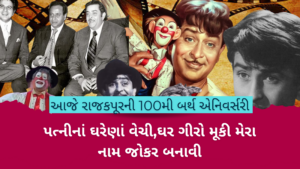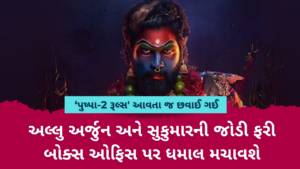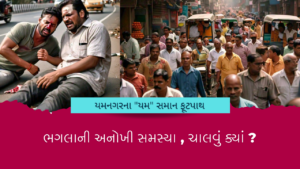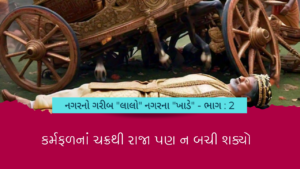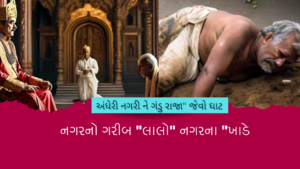India is stagnant for sure with respect to one issue, the difficulties faced by migrant workers who travel from rural areas to metropolitan centres in search of employment and greater opportunities for socioeconomic mobility. The journey and experiences of these labourers have been the subject of several Bollywood movies like ‘Do Bigha Zameen’, ‘Bheed’ also including Raj Kapoor’s 1955 film ‘Shree 420’. It draws attention to the exploitation present in a capitalist system, which is frequently overlooked by both society at large and the law in particular. This calls into question the restrictive interpretation of ‘cheating’ under Section 420 (IPC) and highlights the class interests and its privileges. The title of the movie, ‘Shree 420’, which alludes to the ‘respectable,’ ‘gentlemen’s’ class’ of thieves, answers the further issue of who the real ‘420’ is.
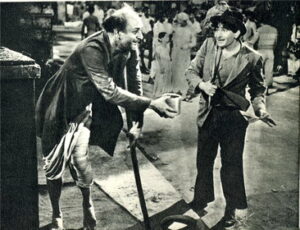 Raj (Raj Kapoor), the main character, is seen driving to Bombay in the opening scene of the movie. The movie explores the issues of nationalism, class, capitalism, and corruption via Raj’s encounters with the city and its residents.
Raj (Raj Kapoor), the main character, is seen driving to Bombay in the opening scene of the movie. The movie explores the issues of nationalism, class, capitalism, and corruption via Raj’s encounters with the city and its residents.
“मुंबई को कोई नहीं खरीद सकता, मुंबई सबको खरीद लेती है और
अपना काम निकालकर किसी रद्दी वाले की दुकान में फेंक देती है|”
Man v\s Development
The film depicts the congested city streets, as individuals rush about minding their own business with no consideration for others around them. Raj wonders aloud, “Is everyone in this city deaf?” in response to this indifference. Bombay is described as by a street beggar, implying the insensitivity and apathy of the city residents towards the labour and migrants who live there as:
“ये बंबई है मेरे भाई…बंबई! यहां बिल्डिंग बनती है सीमेंट की और इंसानों के दिल पत्थर के|”
‘420’ Ways
 Raj quickly learns that there is no employment available and that one can only survive by being a ‘420’ (cheating) when he discovers the harshness of the city. He is tricked and robbed on the street as soon as he arrives in the city, which seems to suggest that in Bombay’s harsh environment, one must either become a conman or be a conman. Raj and other immigrants like him, who have nothing and no one in the city, rely on the kindness and generosity of the other migrant labourers who make up their informal community in order to survive.
Raj quickly learns that there is no employment available and that one can only survive by being a ‘420’ (cheating) when he discovers the harshness of the city. He is tricked and robbed on the street as soon as he arrives in the city, which seems to suggest that in Bombay’s harsh environment, one must either become a conman or be a conman. Raj and other immigrants like him, who have nothing and no one in the city, rely on the kindness and generosity of the other migrant labourers who make up their informal community in order to survive.
“ये बंबई है मेरे भाई…बंबई! यहां सच बोलकर पेट भरने का रास्ता ढूंढने से नहीं मिलता
और झूठ बोलकर पैसे बनाने के रास्ते हैं 420|”
Becoming a Conman
When he initially comes, the city-dwellers mistake his ‘pure’ and honest personality for silly naiveté. Even before he arrives in the city, he is able to hail a car by appearing to be unconscious, underscoring the need to be dishonest. The contrast between honesty and dishonesty is highlighted early in the movie when lying gets him a ride while telling the truth gets him run off the road. These kinds of incidents demonstrate that the corrupting character of the metropolis is more a result of need than of ‘bad influence.’
“ये बंबई है मेरे भाई…बंबई! यहां दूसरों को गिरता देखकर सब हंसते हैं,
मगर जब खुद गिरते हैं तो हंसना भूल जाते हैं|”
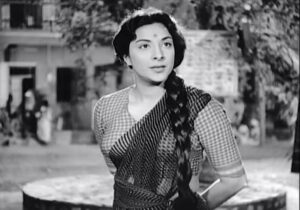 It is difficult to fully defend corruption on the grounds of need, though, as personalities like Vidya (Nargis) demonstrate since there is also a component of individual agency. Raj pawns or sells his honesty (a gold medal), which is one of his first symbolic transactions in the city. This might be seen as Raj’s desire to succumb to the city’s attractions or as a sign that he must be dishonest in order to live. It may also suggest that, under the exploitative system of capitalism, there is always a trade-off between pursuing material success and upholding moral standards.
It is difficult to fully defend corruption on the grounds of need, though, as personalities like Vidya (Nargis) demonstrate since there is also a component of individual agency. Raj pawns or sells his honesty (a gold medal), which is one of his first symbolic transactions in the city. This might be seen as Raj’s desire to succumb to the city’s attractions or as a sign that he must be dishonest in order to live. It may also suggest that, under the exploitative system of capitalism, there is always a trade-off between pursuing material success and upholding moral standards.
“अच्छा तो चलिये एक नकली चेहरा उतार कर दूसरा नकली चेहरा पहन लेता हूँ|”
The Social Dejections
What’s intriguing, though, is Raj’s justification for his decision to lie. This emphasises how closely ‘corruption’ and ‘classes’ are related. “Why lectures on honesty and truth are usually offered to the impoverished, he wonders? While the wealthy continue to accumulate fortune by dishonesty?” Maya’s (Nadira) remark to him that cheating on a smaller scale makes one a crook but cheating on a larger one makes you a philanthropist also reflects this philosophy.
 The idea of ‘class’ permeates in the entire movie, particularly in the visual of the little walkway in front of a large, expansive estate, which illustrates the stark disparity between the classes. The movie demonstrates how societal systems influence one to prioritise self-interest and become self-centered; Raj claims that “while I was starving, homeless, and asking for employment, the world didn’t care. So why, now that I am wealthy, should I care about the world?”
The idea of ‘class’ permeates in the entire movie, particularly in the visual of the little walkway in front of a large, expansive estate, which illustrates the stark disparity between the classes. The movie demonstrates how societal systems influence one to prioritise self-interest and become self-centered; Raj claims that “while I was starving, homeless, and asking for employment, the world didn’t care. So why, now that I am wealthy, should I care about the world?”
The movie also shows how the working people share bourgeois desires for marriage, riches, extravagance, and ‘honour’ or ‘respect.’ But most of the people cannot achieve these goals. The phrase ‘not selling houses, but selling a dream’ is spoken by a dishonest salesperson in the movie; possibly this illustrates how the capitalist class not only takes advantage of the lower classes as labourers but also as consumers of a bourgeois lifestyle.
Nationalist Discourse
In the film, the concepts of country and national identity are also extensively examined. The song:
“मेरा जूता है जापानी, ये पतलून इंग्लिशतानी, सर पे लाल टोपी रूसी,
फिर भी दिल है हिंदुस्तानी|”
 It explores nationalism in a period of globalisation when Raj wears Japanese shoes, foreign trousers and Russian hat yet has a ‘Hindustani heart’. But what does Raj’s ‘Hindustani’ identity actually mean? In the movie, a wealthy, bourgeois politician similarly uses the same nationalist spirit to promote and sell tooth powder. This serves as a reminder that nationalism may be co-opted by the market and the bourgeoisie to further their own agendas.
It explores nationalism in a period of globalisation when Raj wears Japanese shoes, foreign trousers and Russian hat yet has a ‘Hindustani heart’. But what does Raj’s ‘Hindustani’ identity actually mean? In the movie, a wealthy, bourgeois politician similarly uses the same nationalist spirit to promote and sell tooth powder. This serves as a reminder that nationalism may be co-opted by the market and the bourgeoisie to further their own agendas.
Concluding on a positive note through Raj’s words:
“दुनिया के साथ जो बदलता जाये
जो इसके साँचे में ही ढलता जाये
दुनिया उसी की है जो चलता जाये
मुड़-मुड़ के न देख……..”






